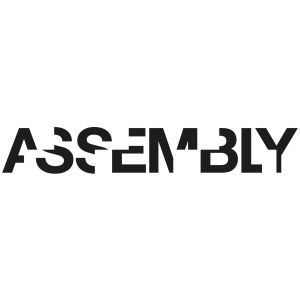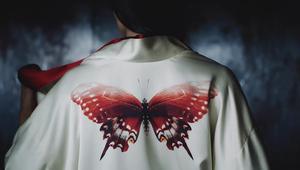
Making the Grade: Cultivating a Taste for Detail with Maria Carretero

Assembly's senior colourist Maria Carretero has a diverse portfolio of work, from Cannes Lions recognized commercial campaigns, to Sundance Film Festival winning film projects. She has a notable roster of blue-chip brand campaigns to her name from high-end fashion to automotive, including recent work for Balenciaga, Allstate, Apple and Porsche. Maria’s feature film highlights have been screened at renowned film festivals such as TriBeCa, Cannes and Sundance. A few of her recent highlights include the SXSW award-winning ‘Introducing Selma Blair’ and critically acclaimed ‘Waikiki’ and Venus by Water. Originally hailing from Spain, where she discovered the power and nuance of colour grading, Maria’s background in painting and fine art often influences her work on the screen.
LBB> What was your first experience with the world of colour grading – and when did you decide that being a colourist was a role that you wanted to pursue?
Maria> My first contact with colour was when I was colour matching digital VFX before they were sent to the LAB. I was a plastic artist at that time, and I felt that digital colour was close to painting, full of sensorial suggestions.
LBB> What was the project that you felt really changed your career?
Maria> 'El Capitan Alatriste' was definitely the film that really changed my career. Being able to work on this film with the Spanish DP Paco Femenía gave me the opportunity to find my own voice and was a profound artistic and technical experience. To this day, this film has the largest film budget in the history of Spanish cinema.
LBB> How/where did you hone your craft and did you have any particular mentors?
Maria> I spent a lot of my early career learning at Deluxe Spain. This led me to have a lot of international experiences as a colourist working with different studios in Madrid, to Dubai, to Chicago, and now New York.
There are three people that specially shaped my career and I will always be grateful for having them in my life. Félix Bergés and Nike Alonso (two of 'El Ranchito's' founders) and Pana Argueta (a senior colourist at NHB Berlin) These people trusted my craft and took care of me as both a professional and as a human being.
LBB> Tell us more about your creative process - (e.g. when you get a project, how do you go about developing a look?)
Maria> The process itself is different for each case. I would like to be as involved as soon as possible, especially if it is a long form project. Being a plastic artist for my entire life gave me thousands of references that I try to bring to the process at an early stage. I find inspiration in all the things that I am constantly checking, from painting, to pictures, to performances, other films, other people's work, music, all that!
LBB> From experience, we’ve found that colourists often love art and photography - when you’re out of the studio, what inspires you?
Maria> Life!
I am very lucky, my life is surrounded by creativity. Most of my friends are developing different works and forms of expression. NYC is a place full of inspiration. The amount of shows that happen monthly over here is a true gift. There is an incredible Wolfgang Tillmans' show at the MOMA right now, have you seen it? You should, lol.
LBB> Colour grading is largely a digital affair, but there’s also been a resurgence of film over the past few years in commercials and music videos. What are your thoughts about working on film versus digital formats like 4K? And what are your favourite techniques for capturing a vintage or tactile feel?
Maria> When it comes to capturing a vintage or tactile feel, I like to think about what processes were being used to develop film at the time period of the project I’m working on. Cinema and technological developments are often related, and the film development processes, cameras, optics, etc. in the '60s vs. '80s (for example) provide a different viewing experience when compared to one another. To recreate a film feel in modern films, I use the past as a reference and take note of colours and grains, etc. to use in my current work.
LBB> When working in commercials, what role can colour and a grade play in enhancing a brand’s assets and what sort of conversations do you have with creatives and clients about that (e.g. is there often a strategic/consistent ‘look’ for a brand? Can these be too heavy handed?)
Maria> Short form projects are always different and very fun to work on but you need good skills to communicate with clients to execute everyone’s vision. Empathy and listening need to happen and are key to the process. Making the clients feel heard and having the ability to negotiate when the things come to a difficult place is imperative. Being on the same page as your creative partners for short form can lead to more color manipulation than you’d typically see in a long form piece due to their length. It can become really fun and experimental which I adore.
LBB> How do you ensure that each colourist-director partnership is a success?
Maria> Communication, communication, communication. And a lot of respect!
I treat every single piece as something unique and with as much care and dedication as possible.
Also, a sense of humour needs to be part of everyday communication as well… Because, man, sometimes we all need a laugh….
LBB> What advice would you give to budding colourists?
Maria> Surround yourself in arts and creativity and take inspiration from anything you can. Cultivate a taste for details, this will help you out in being able to better manipulate an image. Be open to learning in every single moment. Don’t be give up – it will come to you at the right moment if you really want it.
LBB> In your opinion, what's the difference between a good grade and a great grade?
Maria> A great grade is when I think to myself 'Hold up…. whaaat? How did they do this?!' When something comes together as a perfect blend of technique (balance, colour space, etc.) but still has a surprising touch of feeling (beauty, challenge, etc). It will feel like a piece of art. If the craft is forcing you to ask the question of how, then it is a great grade!
LBB> How is the craft and trade of colour grading changing?
I think it’s very interesting. When I started, there were only a few colourists around, it was such a rare profession. Also, women! We have more and more women in the industry now. This is very refreshing to see. More voices and more diversity are all great things for the creative process.
We also have hybrid systems that are offering new ways to collaborate and connect profiles that are not in the same country or space. Having the chance to expand contacts in a non-traditional way gives us some flexibility in the work process.
There are so many interesting challenges in the future to redefine our industry from the mentorship programs, how to create space for the new voices, how we convert all this heritage into something that creates new possibilities. Very exciting times!













